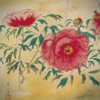Summary of Soga School of Japanese Painting
The Soga School was a school of Chinese-style painting that existed intermittently in Japan from the mid-Muromachi period to the early Edo period.
Although it was a local school of painting with many mysteries overall, Soga Chokuan, who was praised alongside the four great masters of the Momoyama school of painting, Kanō Eitoku (狩野永徳), Hasegawa Tōhaku, Kaihō Yūshō, and Unkoku Tōgan, existed in the Sengoku period.
In this article, we would like to briefly introduce the Soga School, which has various theories.
Contents
Soga Shūbun
曾我秀文. His exact date of birth and death is unknown, but he was active in the 15th and 16th centuries. He was originally from the Ming Dynasty in China. It is said that he came to Japan in 1424 to serve the Asakura clan in Echizen Province and took the surname Soga. He painted Southern Song paintings with dynamic brushwork, which became the basis for the later Soga School style of painting.
Soga Bokkei
曾我墨渓. Founder of the Soga school. His birth date is unknown, but his death date is said to be 1473. Some say he was a child of Soga Shūbun. The name of the painting was “Jasokuken/Dasokuken 蛇足軒” and the painters of the Soga School after him used the name “Jasoku/Dasoku 蛇足”. “He was better known as Soga Jasoku. He studied painting under Tenshō Shūbun and was active mainly at the Daitoku-ji temple.
Soga Sōjō
曾我宗丈. Fl. late 15c to early 16c. Son of Soga Bokkei. The second generation of the Soga school. Studied painting under his father and Tenshō Shūbun.
Soga Shōsen
曾我紹仙. Fl. early 16c. Son of Soga Sōjō, the third generation of the Soga school. In 1523 he painted Landscape, which is now in the collection of the Nezu Museum.
Soga Sōyo
曾我宗誉. Fl. mid-16th century. Child of Soga Shōsen, the fourth generation of the Soga school. In 1562, he composed a poem at the Kyokusui banquet organised by Asakura Yoshikage at Ichijōdani. In 1573, the Asakura clan was destroyed by Oda Nobunaga.
Soga Shōshō
曾我紹祥. Fl. late 16th century. There is a theory that he was the son of Soga Sōyo. According to the Honchōgashi (a biography of Japanese painters published by Kanō Einō in 1679, one of the fundamental sources of Japanese painting history), he was the master of Hasegawa Tōhaku (1539-1610). It is thought that he moved to Sakai, Ōsaka after the fall of the Asakura clan.
Soga Chokuan
曾我直庵 (Around 1550?-1620?). Active in the late sixteenth and early seventeenth centuries, he was said to be the son of Soga Shōshō, and as it is uncertain that Soga Shōshō was the fifth generation of the Soga school, there is no confirmation that Soga Chokuan was the sixth. However, he was active in Sakai under the name of “the 6th generation of Jasoku/Dasoku” and tried to rebuild the Soga school. Thought to have moved to Sakai, Osaka with Soga Shōshō after the fall of the Asakura clan. Along with Kanō Eitoku (狩野永徳), Hasegawa Tōhaku, Kaihō Yūshō, and Unkoku Tōgan, he is one of the most famous painters of the Momoyama period. He specialises in paintings of falcons.
Soga Nichokuan
曾我二直菴. 1590-1660? It is said that he was the son of Soga Chokuan, and if this is true then Soga Nichokuan would be the seventh generation of the Soga school, but there is no proof of this. He was active in Sakai. Like Soga Chokuan, he excelled in paintings of falcons.
The Soga school is said to have been followed by Soga Sanchokuan, the son of Soga Nichokuan, Soga Yoshishige, Gyokuō (a disciple of Soga Nichokuan), Tamura Chokuō (a disciple of Soga Chokuan), Soga Shōkō (8th generation), and Soga Shōshuku (9th generation) although little is known about any of them with certainty.
Soga Shōhaku
曾我蕭白. 1730-1781. Painter of the mid-Edo period. Soga Shōhaku himself claimed to belong to the Soga school of painting, and his signature shows that he was the tenth generation of Jasoku/Dasoku, but he was never related to the Soga school.










